Physical Address
304 North Cardinal St.
Dorchester Center, MA 02124
Histiocytic disorders occasionally affect the eye and ocular adnexa. The range of histiocytic lesions seen by ophthalmologists includes Langerhans cell histiocytosis (LCH), juvenile xanthogranuloma (JXG), Rosai–Dorfman disease (RDD), and Erdheim–Chester disease (ECD). While LCH and JXG are predominately pediatric disorders, rare cases of pediatric adnexal RDD occur and very rarely, ECD occurs in children. Leukemic disease in the pediatric orbit most commonly manifests as a solid extramedullary lesion of myeloid leukemia known as a granulocytic sarcoma. Ocular adnexal lymphoma is rare in childhood, except for Burkitt’s lymphoma, which is endemic in sub-Saharan Africa.
Early in the 20th century, Hand–Schüller–Christian disease was described as a combination of a skin rash, bony lesions, and diabetes insipidus. Letterer, in 1924, and Siwe, in 1933, described a histologically similar entity with more extensive involvement including hepatic, splenic, and marrow abnormalities. Solitary eosinophilic granulomas were subsequently reported. The common histopathological features of these three disorders was noted by Lichtenstein, who suggested the term “histiocytosis X” to denote the histiocytic origin but unknown pathogenesis. Breathnach and Birbeck described pentalaminar zipper-like intracytoplasmic inclusions (Birbeck granules) in cutaneous Langerhans cells contemporaneously with Nezelof and Bassett, describing identical structures in the lesions of histiocytosis X using electron microscopy. This led to the belief that the Langerhans cell was the cell of origin in these disorders, henceforth dubbed Langerhans cell histiocytosis.The pediatric incidence of LCH is about five cases per million in population-based studies. The majority of ocular adnexal involvement is from single site, single-system disease, the so-called eosinophilic granuloma ( Fig. 25.1A ). This is more common in boys. In one large series, 80% of cases occurred in boys, with an age range of 10 months to 33 years (mean 8.5, median 7.2 years). Girls tended to be younger (mean only 4.1 years) and tended to have more severe involvement. In the same series, 80% presented with a painless swelling of the superior orbit (eosinophilic granuloma). Only 6% manifested multifocal multisystem disease, presenting with signs of diabetes insipidus due to posterior pituitary involvement associated with bilateral proptosis ( Fig. 25.1B ). Visual loss is unusual but can occur due to optic nerve compression or prolonged raised intracranial pressure. It is important for ophthalmologists to be aware of the possibility of systemic involvement and arrange for appropriate systemic investigation and oncological assessment. Usually imaging with computed tomography (CT) or magnetic resonance imaging (MRI) will be performed to assess the orbital lesion ( Fig. 25.2 ). While MRI is the preferred initial investigation in children, CT does delineate the lytic bony lesions well. The lesions are generally centered on the lacrimal gland fossa, but with bony erosion extending sometimes into the temporal ( Fig. 25.3 ) and anterior cranial fossae (see Fig. 25.3 ). In older patients, the greater wing of the sphenoid may be involved, when erosion can occur into the middle cranial fossa ( Fig. 25.4 ). Subsequent biopsy will confirm the diagnosis, prompting further investigation and referral. The initial evaluation should include full blood count, liver function tests, electrolytes, coagulation studies, sedimentation rate, lactate dehydrogenase, immunoglobulins, uric acid, and ferritin. Bone marrow and lower gastrointestinal endoscopy are also mandated. One of the characteristic MRI findings in LCH is the loss of the normal posterior pituitary enhancement due to infiltration with affected tissue. Other central nervous system involvement includes various soft tissue deposits and diabetes insipidus.
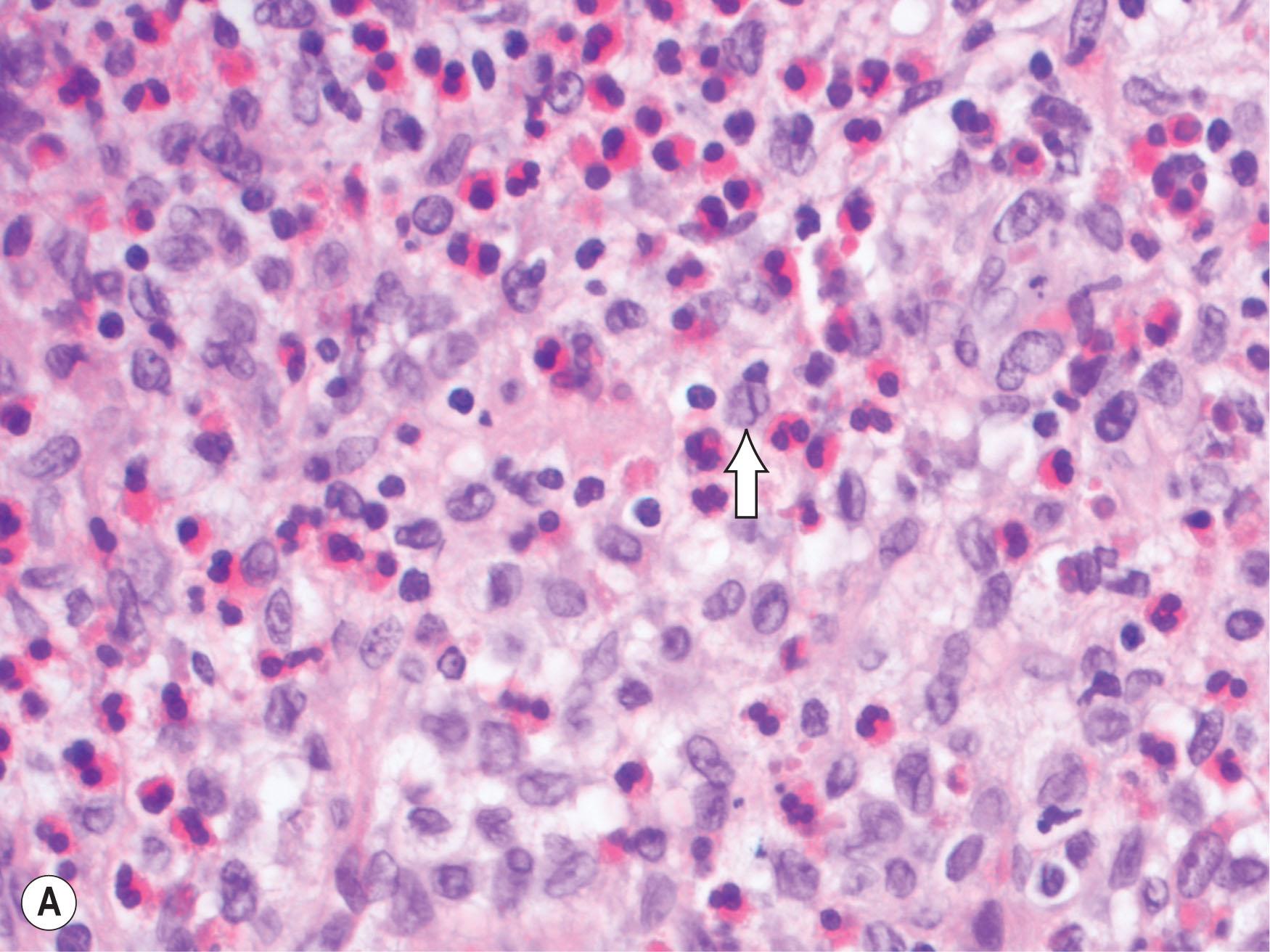
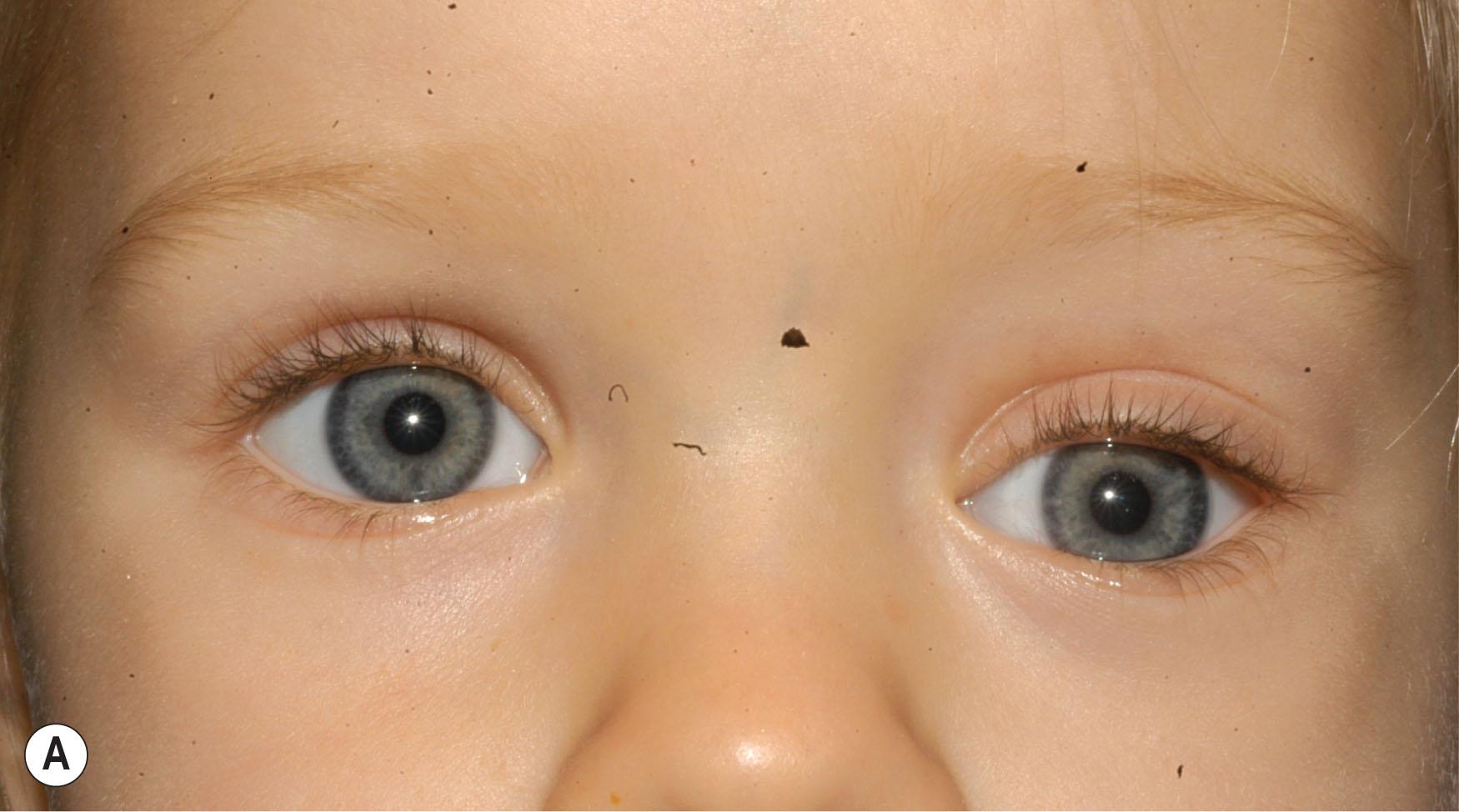
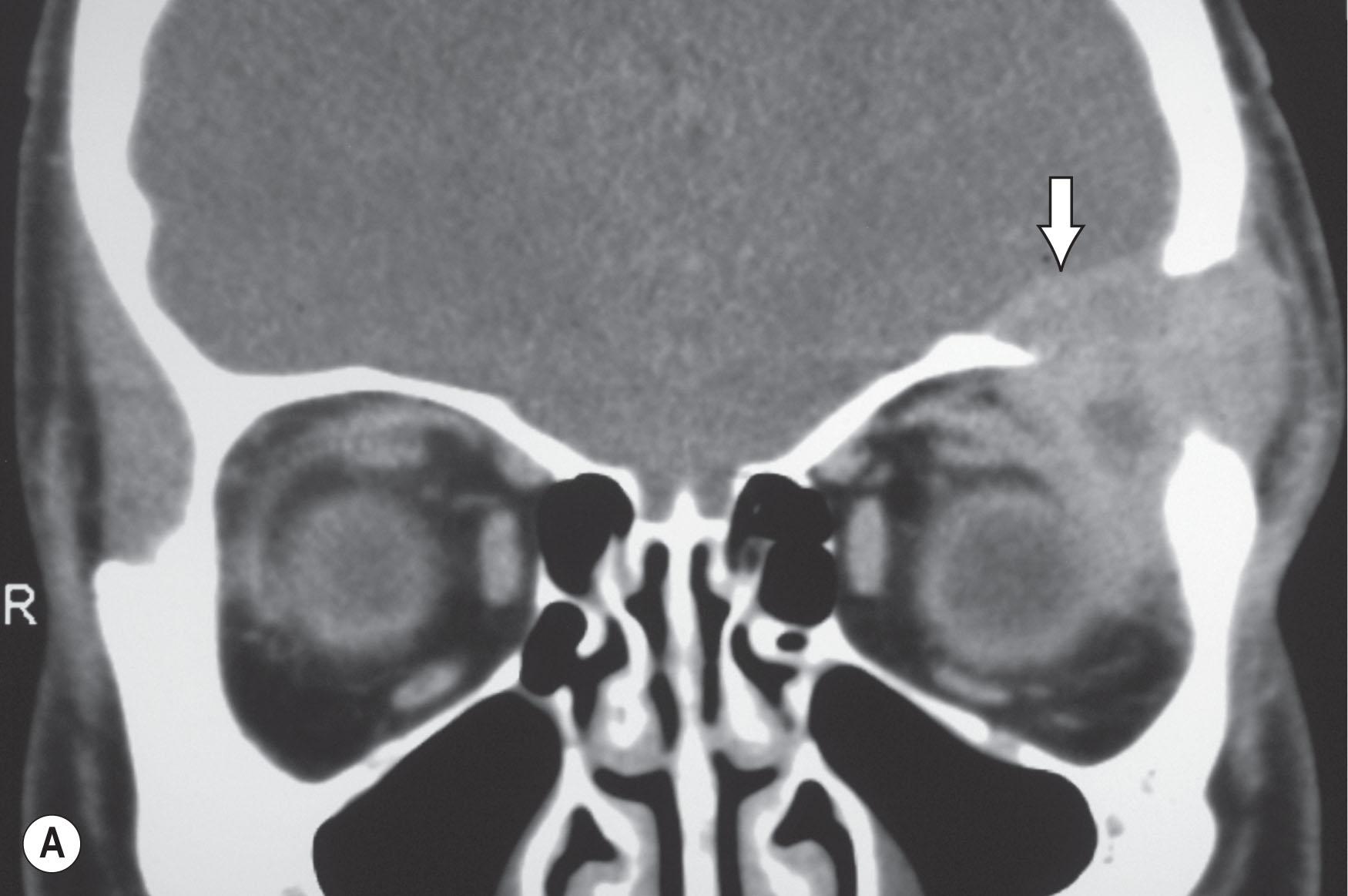
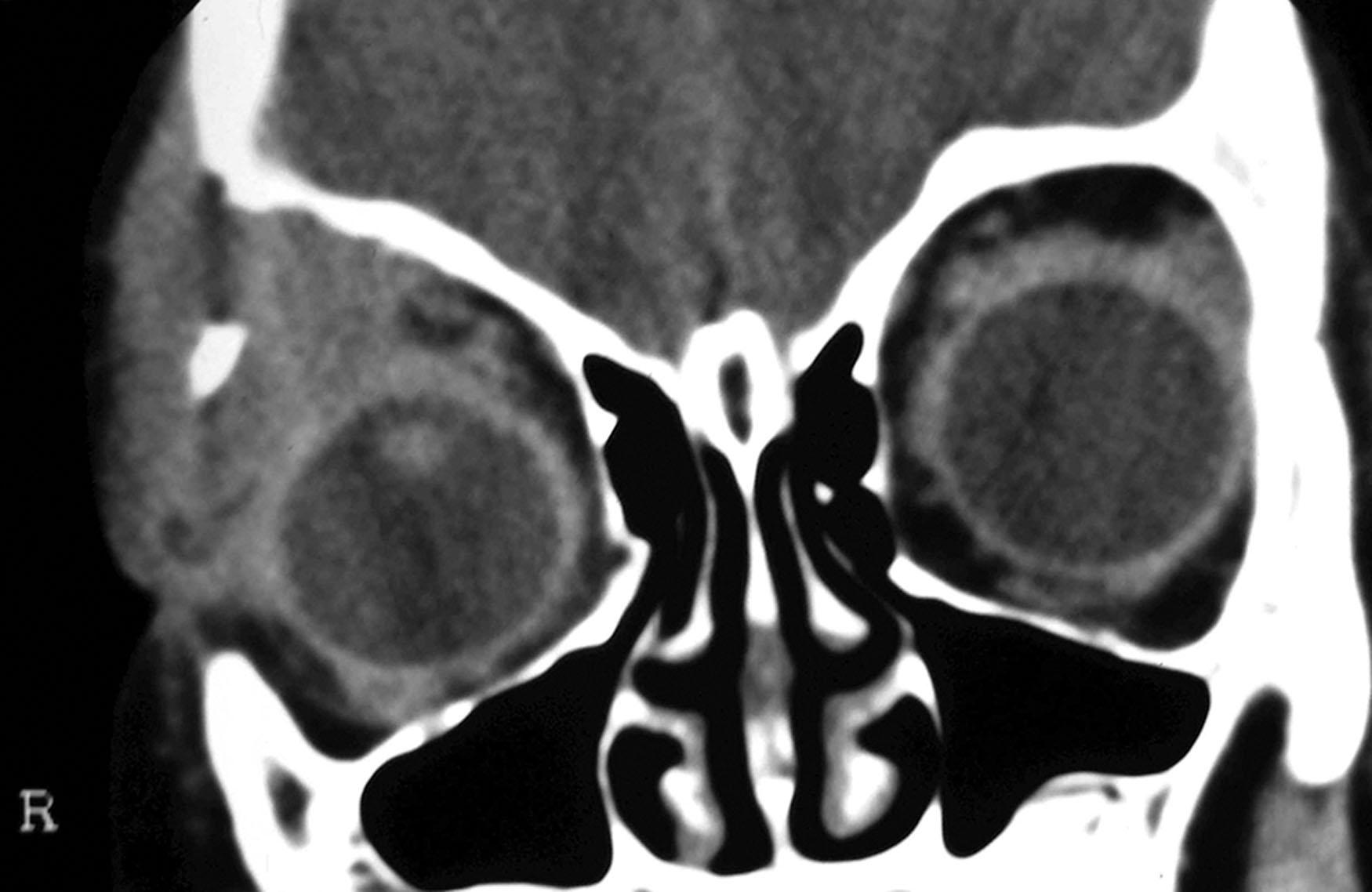
The pathological histiocyte demonstrates a nucleus with a central stripe, reminiscent of a coffee bean, eosinophilic cytoplasm, and positivity for CD1a, CD207 (langerin), and S100 ( Fig. 25.5 ). Standard light microscopy also revealed an abundant infiltrate of eosinophils, lymphocytes, and macrophages, suggesting an inflammatory process rather than a neoplastic process. However, clonality was demonstrated by Yu and Wilmann in 1994. It is now known that mutations in the Ras-ERK pathway are common in LCH, with BRAF mutations found in 60% of cases, mutually exclusive MAP2K1 mutations in 15%–40%, and more rarely, ARAF mutations, confirming LCH to be a neoplastic process with an associated inflammatory response. The pathological histiocytes do have some differences from epidermal Langerhans cells, lacking the typical dendritic spines and demonstrating a gene expression profile consistent with a precursor myeloid dendritic cell rather than a cutaneous dendritic cell. Thus, importantly, LCH is now classified as a myeloid neoplasia.
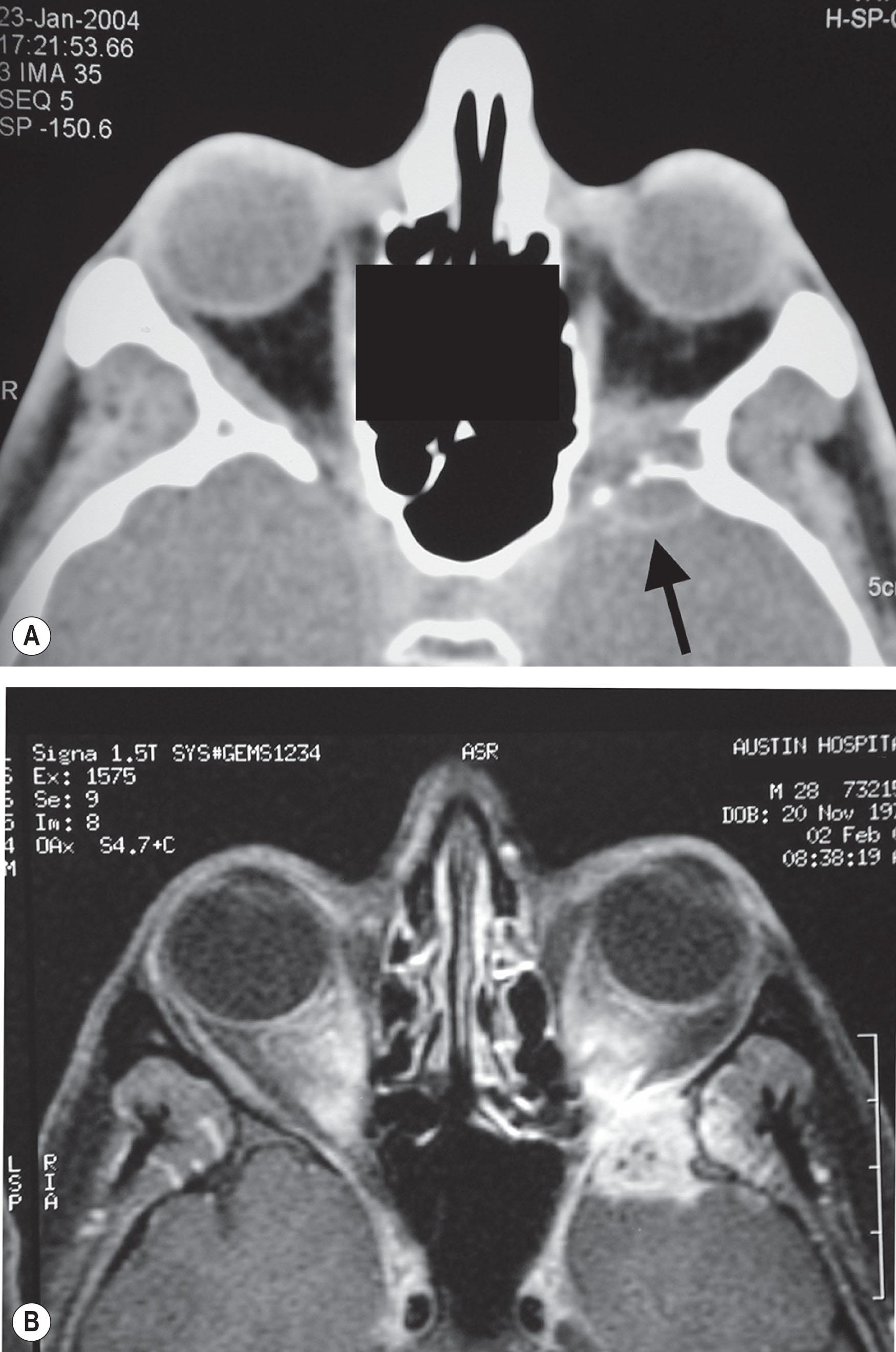
All the mutations in LCH appear to be directed to the mitogen-activated protein kinase (MAPK, ERK) signaling pathway, which has numerous roles but influences cell cycle in terms of proliferation, apoptosis, and senescence. ERK is extracellular signal-regulated kinase, a key enzyme late in the pathway. The other mutations ( BRAF , MAK2K1 ) lead to ERK activation. This pathway is the same one involved in neurofibromatosis and melanoma development. The timing of the mutation appears to determine which histiocytic clinical syndrome manifests. BRAF mutations were present in peripheral blood of all patients with widespread high-risk disease, a small number of those with multifocal low-risk disease, and no patients with single-system disease. Other epigenetic influences or additional mutations might also account for variations in disease behavior.
To assess the extent of LCH (staging) and therefore stratify for risk, whole body MRI is more sensitive than radiographic skeletal survey or bone scan ( Fig. 25.6 ). Fludeoxyglucose positron-emission tomography-computed tomography (FDG PET-CT scanning) is also a highly sensitive modality for staging of disease and follow-up, and has been shown to be more sensitive than conventional radiography and bone scans. Management of the orbital lesion generally involves confirmatory biopsy with curettage, to remove as much lesion tissue as possible, and perilesional steroids. With unifocal, unisystem involvement, other treatment is usually unnecessary. However, appropriate systemic investigation must be performed and if there is multifocal or multisystem disease, oncological management is appropriate. The Histiocyte Society has conducted international multicenter randomized trials, LCH I–IV, and other multicenter studies in Europe and Japan have contributed to management approaches, which have largely been vinblastine and prednisolone, with cytarabine regarded as an option from the Japanese studies and LCH IV. With multisystem, multifocal disease, refractory or relapsed lesions occur frequently and cladribine, clofarabine, and cytarabine have all been used in this setting. Targeted therapy with BRAF inhibitors such as vemurafenib has induced a good response in patients with the BRAF mutation. Other agents directed toward the MAPK pathway may also have a role, especially in BRAF-negative lesions. Bony lesions have also responded to prostaglandin therapy, especially for symptomatic unifocal osseous involvement. Where patients do not respond to these treatments, stem cell transplantation has a role. The vast majority of the lesions seen by ophthalmologists are unifocal single-system lesions, and they do well. The prognosis for multisystem multifocal disease remains guarded, but is improving with improved understanding of the pathogenesis, the cell of origin, and the use of targeted therapies.
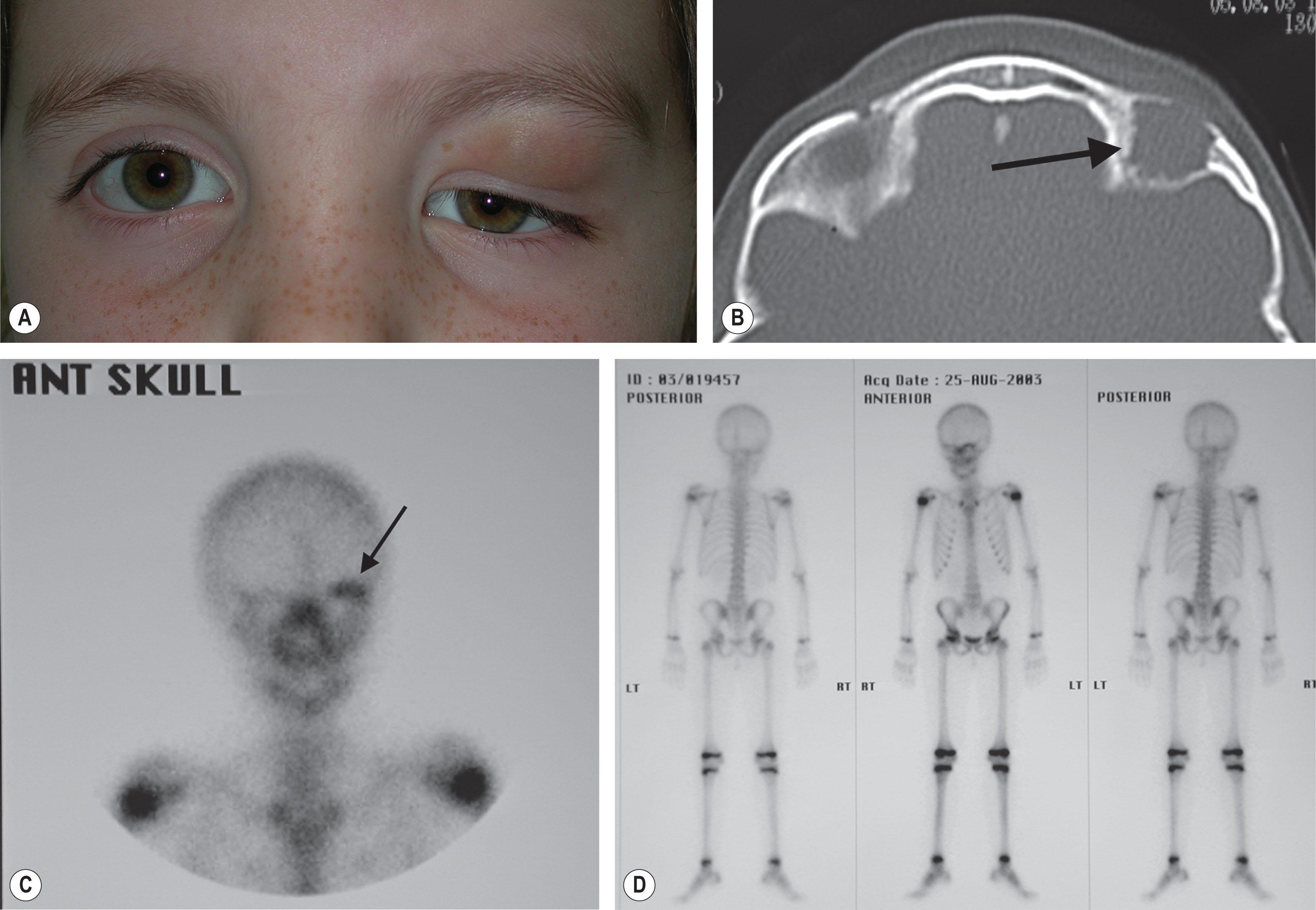
Become a Clinical Tree membership for Full access and enjoy Unlimited articles
If you are a member. Log in here